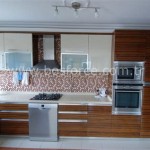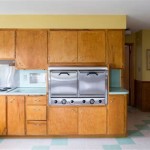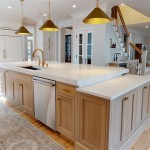How To Sand And Stain Wood Kitchen Cabinets
Sanding and staining wood kitchen cabinets involve meticulous steps to achieve a seamless and durable finish. Understanding the essential aspects of this process ensures a successful outcome. This article provides comprehensive insights into the significance of preparation, sanding techniques, stain selection, application methods, and finishing touches, empowering DIY enthusiasts and professionals alike to transform their kitchen cabinets with confidence.
Commencing the journey of sanding and staining wood kitchen cabinets requires thorough preparation. Removing cabinet doors and hardware, cleaning surfaces to eliminate dirt and grease, and addressing any repairs are crucial. These preliminary steps lay the foundation for a smooth and consistent finish.
Sanding Techniques: Armed with the appropriate sandpaper and sanding tools, the sanding process aims to create an even surface that enhances stain absorption. The choice between hand sanding and using power sanders depends on the project's scale and the desired level of control. Mastering sanding techniques ensures the removal of old finishes and imperfections without damaging the wood's integrity.
Selecting the Right Stain: The stain selection process significantly influences the final look of the cabinets. Consider the natural wood grain, existing décor, and desired color palette. Oil-based stains penetrate deeply, offering rich and durable hues, while water-based stains are easier to apply and provide a more transparent finish. Understanding the characteristics of each stain type empowers informed decision-making.
Application Methods: Apply stains evenly using brushes, rags, or sponges, ensuring thorough coverage. Allow ample drying time between coats to prevent smudging or uneven absorption. Applying multiple thin coats enhances color depth and minimizes brush strokes, resulting in a professional-looking finish.
Finishing Touches: Finishing touches complete the transformation, protecting the stained surface from wear and tear. Polyurethane, a durable and versatile finish, is commonly used for kitchen cabinets. Choose between matte, satin, or gloss finishes to match the desired sheen level and complement the overall design. Applying multiple coats of polyurethane safeguards the stain and enhances the cabinets' longevity.
Sanding and staining wood kitchen cabinets can elevate the aesthetics of a kitchen, adding warmth, character, and a personalized touch. By following these essential aspects, DIYers and professionals alike can achieve stunning results that reflect their creativity and craftsmanship.

Cabinet Refinishing An 8 Step Guide For Pro Painters Ppc

Staining Your Wood Cabinets Darker Young House Love

How To Make Rustic Kitchen Cabinets By Refinishing Them The Best Stain Color Amanda Katherine

Refinishing Kitchen Cabinets Modern Refacing Made Easy Wisewood
Refinishing Kitchen Cabinets A Beautiful Mess

Cabinet Refinishing Guide

How To Refinish Wood Cabinets The Easy Way Love Remodeled

How To Refinish Kitchen Cabinets N Hance

Staining Kitchen Cabinets Pictures Ideas Tips From
/102182203-4cf08265c33b4c4e88fb21315a8fe626.jpg?strip=all)
Our Step By Guide To Beautiful Stained Wood Cabinets








